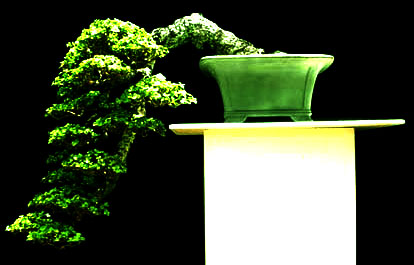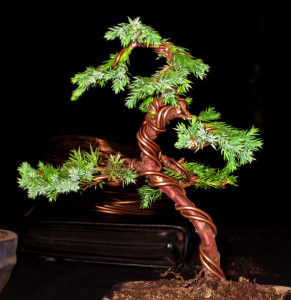
Homemade Bonsai
Bonsai is a technique to beautify the plants so do not be surprised if many people enjoy bonsai. Prices are relatively expensive bonsai is an attraction for entrepreneurs to create and do business in the of bonsai. Generally, plants that can be used for bonsai is all kinds of plants that have a long lifetime and are generally bonsai using woody plants but there are also other plants. Actually, anyone can make a bonsai origin would pursue and tenacious.
Before you start
Before asking yourself how to grow a bonsai, you should consider which specie you would like to plant and also the conditions of your home, surrounding environment and climate. There are a few options that could be good for starters, such as the Chinese elm and the Japanese black pine. Keep also in mind that any tree can become a bonsai, but details like leave size should be thought about. A lot of people prefer trees with small leaves, because are easier to model.There’s also another consideration you should make when planning to grow a bonsai: There are many ways to do it. You could star from zero, which means buying seeds from a shop or picking them up near the trees around your home or in the wild. You could also find or buy a young plant, called a prebonsai, which consist of a germinated tree in early stage. That way the whole process becomes faster, even though remember: to grow a bonsai is also an exercise of patience. The last option may be the easiest but also the most boring one: that is to buy a full grown bonsai. In that case you would only have to do caring activities. It’s important to know: There are no “bonsai seeds”. If someone offers you such a product he’s either lying or don’t know much about bonsai.

Cascade Style Bonsai
The cheapest and nicest ways
To grow a bonsai from seed is a slow and hard working process but is also the most rewarding way to do it. It may take years and you may fail at first, but as long as you keep trying and feel passionate about it you’ll be amazed by the results.If you’re a starter then you’ll probably don’t want to wait that long for results. What most people recommend is to buy a prebonsai, or find one in a forest near your home (remember that a prebonsai is nothing more than a tree in its early stages). In case you decide the second option there are many considerations. You need permission from the landowner to do it. Also you have to be very careful on not damaging the roots when digging. There is also a specific time of the year to do it: the first weeks of spring.
When you grow a bonsai from seed you should do the planting on autumn, so they start germinating in spring. It’s always better to select trees that can adapt easily to the climate of the place you live; that way it’ll work in our favor.
Pruning and wiring

Bonsai Wiring
On the other hand, wiring has also been a useful option to grow a bonsai. Shaping angles, generating branches, all this can be done by wiring. However it’s very important to do it the right way, because it can be a disaster if not done properly.
There are more techniques that can be applied when you grow a bonsai. You can defoliate the tree to obtain smaller leaves, or to balance it shape. There’s also a well known technique called Jin & Shari which consist in making a bonsai look old and mature by creating areas of deadwood on the tree, just like happens in nature sometimes.
Bonsai caring
Keeping strong and healthy your miniature tree is all about good care. If you decide to grow a bonsai this is the last step of the way and, if you do it right, the most rewarding one. It’s also the longest procedure because it could last most of your life and even after, if you decide to leave it to your descendants. In Japan, families inherit bonsais from one generation to another.As we said before, there are many types of bonsais as there are trees species, so the way you take care of them may differ from one to another. For the watering process you should constantly check the soil of the bonsai and keep it damp and when it gets slightly dry then water it again. It’s very important not to flood it.

Decorative Homemade Bonsai
When you grow a bonsai, there’ll be a point when you’ll have to think about taking it from an old pot to a new one, it’s called repot. Different species of trees means different repot periods, from 2 to 5 years.
Fertilization is also a convenient topic to know. There are many bonsai friendly fertilizers but you can use regular ones as well, but be very careful not to use too much though. Most commercial brands have instructions on how to use them.
Remember to always check for uninvited guest on your bonsai. Your miniature tree is no different from the original one when it comes to fungus, pests or diseases.
No comments:
Post a Comment